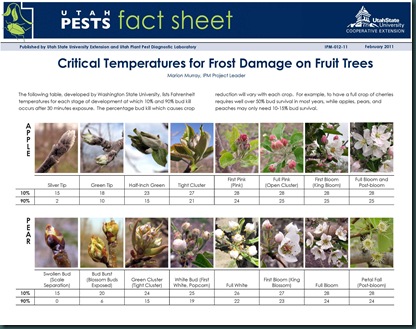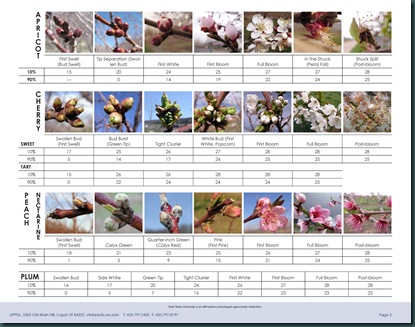Each spring I post the spring critical temperatures chart from Utah State to help you determine at what stage your fruit trees may be at as spring progresses. With the prediction of temperatures in the mid 30’s for tonight in northern Illinois, I thought I would repost the “Critical Temperatures For Frost Damage on Fruit Trees” now for those who grow their own fruit at home and for commercial growers. Our trees here at Royal Oak Farm Orchard should be far enough along that the low 30’s should not have much effect on the current clusters and blooms. But here is an explanation of how the fruitlets, clusters or blooms can be effected if the temperatures get low enough.
As the trees develop in the spring and buds start to swell, they lose the ability to withstand the cold winter temperatures that they could withstand in dormancy during the cold winter months. The young, actively growing tissue can then be damaged or even killed. Swollen fruit buds can better withstand temperatures in the teens without any damage. As the buds open, temperatures in the low 20s can cause harm, but sometimes leave other buds undamaged. As growth moves from green tip to 1/4” green to 1/2” green to tight cluster to pink in apple trees, temperatures in the upper 20s can cause considerable harm to an early blooming tree. Near bloom, the range between slight and severe damage can be very small. So the stage of bud development determines how susceptible any given fruit crop is when freezes occur. For more information on what those critical temperatures are that can cause freeze damage to trees during development, I have uploaded two charts from Utah State University that you can download in PDF format by clicking on either chart above.
Blogger Labels: Critical,Frost,Damage,Fruit,Trees,winter,tissue,Swollen,teens,growth,tree,Near,development,Utah,State,Temperatures
